WALL STREET NUMBER

Stand and Deliver!, N. C. Wyeths lone cover for Life Magazine, September 1921


At Dover Publications were committed to producing books in an earth-friendly manner and to helping our customers make greener choices. Manufacturing books in the United States ensures compliance with strict environmental laws and eliminates the need for international freight shipping, a major contributor to global air pollution. And printing on recycled paper helps minimize our consumption of trees, water and fossil fuels. The text of this book was printed on paper made with 10% post-consumer waste and the cover was printed on paper made with 10% post-consumer waste. At Dover, we use Environmental DefensesPaper Calculator to measure the benefits of these choices, including: the number of trees saved, gallons of water conserved, as well as air emissions and solid waste eliminated.Courier Corporation, the manufacturer of this book, owns the Green Edition Trademark.Please visit the product page for Great Illustrations by N. C. Wyeth at www.doverpublications.com to see a detailed account of the environmental savings weve achieved over the life of this book.
Copyright
Copyright 2011 by Dover Publications, Inc.
Text copyright 2011 by Jeff A. Menges
All rights reserved.
Bibliographical Note
This Dover edition, first published in 2011, is an original compilation of N. C. Wyeth illustrations reprinted from various sources.
Library of Congress Cataloging-in-Publication Data
Wyeth, N. C. (Newell Convers), 18821945.
Great illustrations by N. C. Wyeth / edited and with an introduction by Jeff A. Menges.Dover ed.
p. cm.
Original compilation of N. C. Wyeth illustrations reprinted from various sources.
Includes bibliographical references.
9780486152394
1. Wyeth, N. C. (Newell Convers), 18821945Themes, motives.
I. Menges, Jeff A. II. Title.
NC139.W93A4 2011
741.973dc22
2011013839
Manufactured in the United States by Courier Corporation
47295701
www.doverpublications.com

Dedicated to
THE KNIGHTS OF JORDAN ROAD
Their appreciation for adventure and a good tale
certainly planted the same in me.
Table of Contents
FRONTMATTER ILLUSTRATIONS
TITLE PAGE: Vignette from Westward Ho! , Charles Scribners Sons, New York, 1920
DEDICATION: Chapter head from The Courtship of Miles Standish, Houghton Mifflin Company, Boston and New York, 1920
THE PLATES: Chapter head from The Pike County Ballads, Houghton Mifflin Company, Boston and New York, 1912
TAILPIECE: From The Pike County Ballads, Houghton Mifflin Company, Boston and New York, 1912
INTRODUCTION
T HERE were scores of talented illustrators who worked prolifically in the early part of the twentieth century. Work was plentiful, and the field of illustration was developing faster than the work could be done. Most of those artists are remembered today as little more than footnotes in dusty publications. A few of themvery fewhave names that have transcended their station. In the 1890s, Charles Dana Gibson created a character of ink lines, The Gibson Girl, who would lead fashion trends and become a portrayal of the feminine ideal. In the mid-twentieth century, Norman Rockwell depicted decades of American life with a small-town feel. For most of the first half of the century, N. C. Wyeth created dramatic story illustrations that set visual standards. Wyeth defined what characters like Long John Silver and Merlin looked like, and created the iconic costumes for Robin Hood and The Last of the Mohicans even though the stories had been illustrated by many others before. Wyeths strong characters, vivid colors, and moments of tension are what most viewers remember best about these images.
In 1902, at the age of nineteen, Newell Convers Wyeth traveled from his Needham, Massachusetts, home to meet and study with Howard Pyle in Wilmington, Delaware. The father of The Brandywine school, Pyle was arguably the most important and influential illustrator of the day. He crusaded to make illustration an art form, and to raise its quality through singlehandedly training a group of selected students. When Pyle interviewed a young N. C. Wyeth, he knew immediately he had found real potential. Wyeth joined the Howard Pyle school, and quickly rose through the ranks to became Pyles star pupil. Pyle reviewed his students work, helped them get their first clients, and in some cases, acted as an agent of sorts. It was Pyle who suggested that Wyeth make a trip out West in 1904so Wyeth could learn firsthand about cowboys and their surroundings. The West would come to dominate Wyeths subjects for the next decade, making him highly sought-after and his art a part of every major magazine of the day.

Endpapers, The White Company,
Cosmopolitan Book Corporation, New York, 1922

After completing his studies with Pyle and returning from his Western expedition, Wyeth settled into life in the Wilmington area. In 1906 he married Carol Bockius. They would later build a home and studio at nearby Chadds Ford, Pennsylvania. Wyeths family with Carol would grow to number five children, with whom N. C. spent a considerable amount of time. A fervent letter-writer, Wyeth remained in constant contact with his mother throughout her life, and such strong parent-child relations would transfer down to his own children, three of whomHenrietta, Carolyn, and Andrewwould go on to become painters in their own right. The Wyeths called the Chadds Ford area home for the rest of Wyeths life, though he would occasionally return to the Needham homestead to visit his mother. Around 1920, Wyeth bought an old Captains cottage in Port Clyde, Maine, with fellow Pyle School alumnus, Sidney Chase. This would become the familys summer retreat, and the subject of a great deal of Wyeths later paintings.
Wyeths career turned a corner in 1911, when Scribners publishing house approached him to do an illustrated edition of Robert Louis Stevensons Treasure Island, with seventeen color plates. He had done some plate books before, but none so complex, and none that had inspired him to this degree. The paintings were completed in late July 1912, and by that October the book had become a total success. The book set a new standard, and the combination of Scribners Classics with Wyeths images yielded sixteen volumes over a period of nearly thirty years.
Wyeth perceived his artistic career with mixed feelings at times. On the one hand, he felt satisfied with the set of canvases that he sent to Scribners, but he often yearned for appreciation outside of publishing. After a decade of being a leader in American illustration, Wyeth began to feel that this was not the kind of legacy he wanted to leave behind. Even during his studies with Pyle, Wyeth had sought recognition as a painter. Between assignments he would produce studies, landscapes, or an occasional still-life. He longed to be known as a painter, not as an illustrator. He saw illustration as a product of a commercial need, and thought that little would be remembered of an illustrators workbut Wyeth did see the benefits. Illustration provided financial security for his family, and by taking on each large new project, he would have a substantial amount of time to pursue his own artistic goals. That cycle of painting for himself, alternating with illustration assignments, would continue for most of Wyeths career.
Next page

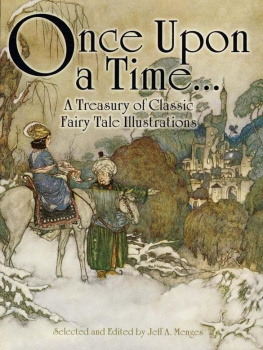
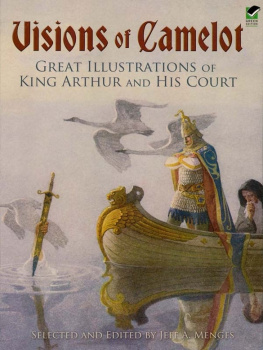
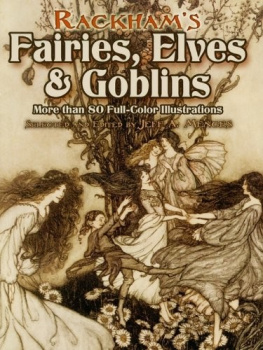

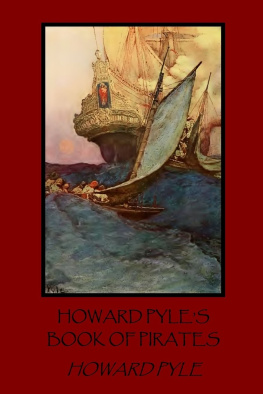

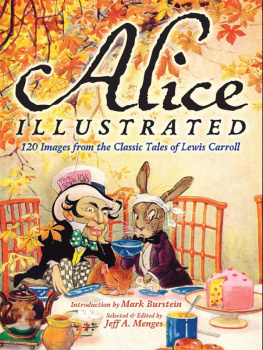
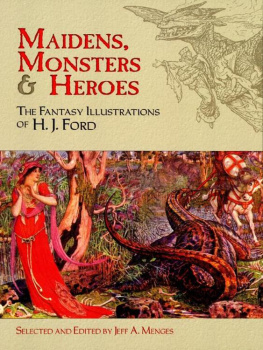
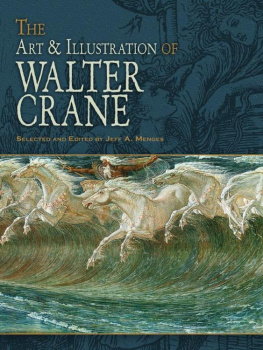


 At Dover Publications were committed to producing books in an earth-friendly manner and to helping our customers make greener choices. Manufacturing books in the United States ensures compliance with strict environmental laws and eliminates the need for international freight shipping, a major contributor to global air pollution. And printing on recycled paper helps minimize our consumption of trees, water and fossil fuels. The text of this book was printed on paper made with 10% post-consumer waste and the cover was printed on paper made with 10% post-consumer waste. At Dover, we use Environmental DefensesPaper Calculator to measure the benefits of these choices, including: the number of trees saved, gallons of water conserved, as well as air emissions and solid waste eliminated.Courier Corporation, the manufacturer of this book, owns the Green Edition Trademark.Please visit the product page for Great Illustrations by N. C. Wyeth at www.doverpublications.com to see a detailed account of the environmental savings weve achieved over the life of this book.
At Dover Publications were committed to producing books in an earth-friendly manner and to helping our customers make greener choices. Manufacturing books in the United States ensures compliance with strict environmental laws and eliminates the need for international freight shipping, a major contributor to global air pollution. And printing on recycled paper helps minimize our consumption of trees, water and fossil fuels. The text of this book was printed on paper made with 10% post-consumer waste and the cover was printed on paper made with 10% post-consumer waste. At Dover, we use Environmental DefensesPaper Calculator to measure the benefits of these choices, including: the number of trees saved, gallons of water conserved, as well as air emissions and solid waste eliminated.Courier Corporation, the manufacturer of this book, owns the Green Edition Trademark.Please visit the product page for Great Illustrations by N. C. Wyeth at www.doverpublications.com to see a detailed account of the environmental savings weve achieved over the life of this book. 

